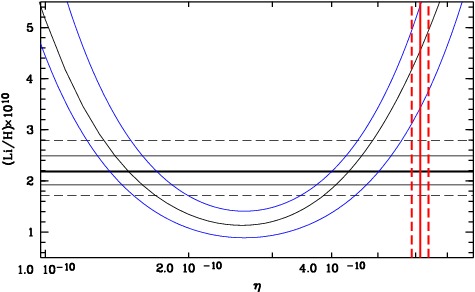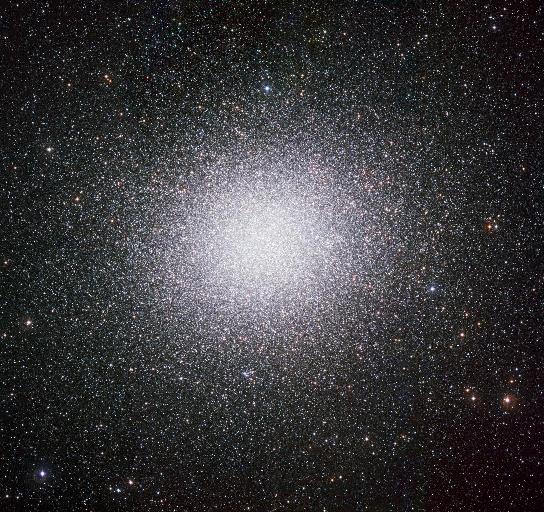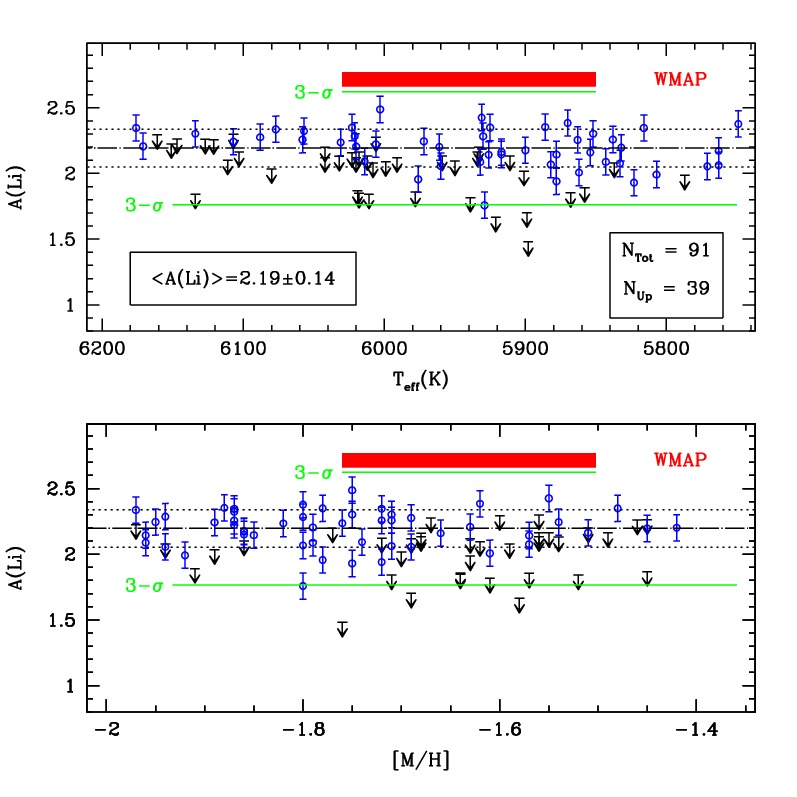The chemical composition of the Sun and the Solar system is the result of a complex evolution, in which the different chemical elements are built up by successive generations of stars. For this reason when we look at older stars we observe a decreasing abundance of all the elements, carbon, oxygen, iron, and so on. There is however a noticeable exception : lithium. Monique and François Spite, of the Observatoire de Paris, discovered at the beginning of 1980’s that all the old stars in our Galaxy share the same lithium content. In fact when we plot the lithium abundance as a function of the abundance of another element, for example iron, we notice a plateau, which is called the Spite plateau. The most straightforward explanation of this plateau is that the ltihium observed in the old stars was produced during the Big Bang, at the same time of the synthesis of the majority of helium present in the Universe. In this case the amount of lithium produced is a sensitive function of the baryon to photon ratio, and therefore of the baryonic density of the Universe. For over twenty years the consistency in the measured abundance of the primordially produced nuclei, deuterium, the two stable helium isotopes 3He and 4He, and 7Li with a single value of the baryonic density has been considered one of the pillars of Big Bang cosmology. However this consistency rested also on rather large errors in the determination of the above abundances, the accurate measurements of the baryonic density from the fluctuations of the Cosmological Microwave Background, when coupled to Standard Big Bang Nucleosynthesis, implied a tension with the Spite plateau (see Fig. 1).

Omega Centauri (Fig.2) is what remains of a satellite galaxy now captured by the Milky Way. In spite of the fact that probably a large fraction of its mass has been lost due to the tidal interaction it is still a factor of 10 more massive than the most massive globular clusters. It hosts a complex mixture of stellar populations of different metallicities and ages. Its turn-off and subgiant stars can be observed at magnitudes 17.5 to 18, although quite faint, still within reach of an 8m class telescope.


Reference L. Monaco, P. Bonifacio, L. Sbordone, S. Villanova, E. Pancino 2010, The lithium content of omega Centauri, A&A in press Contact Lorenzo Monaco (European Southern Observatory) Piercarlo Bonifacio (GEPI, Observatoire de Paris, CNRS, Université Paris Diderot)
